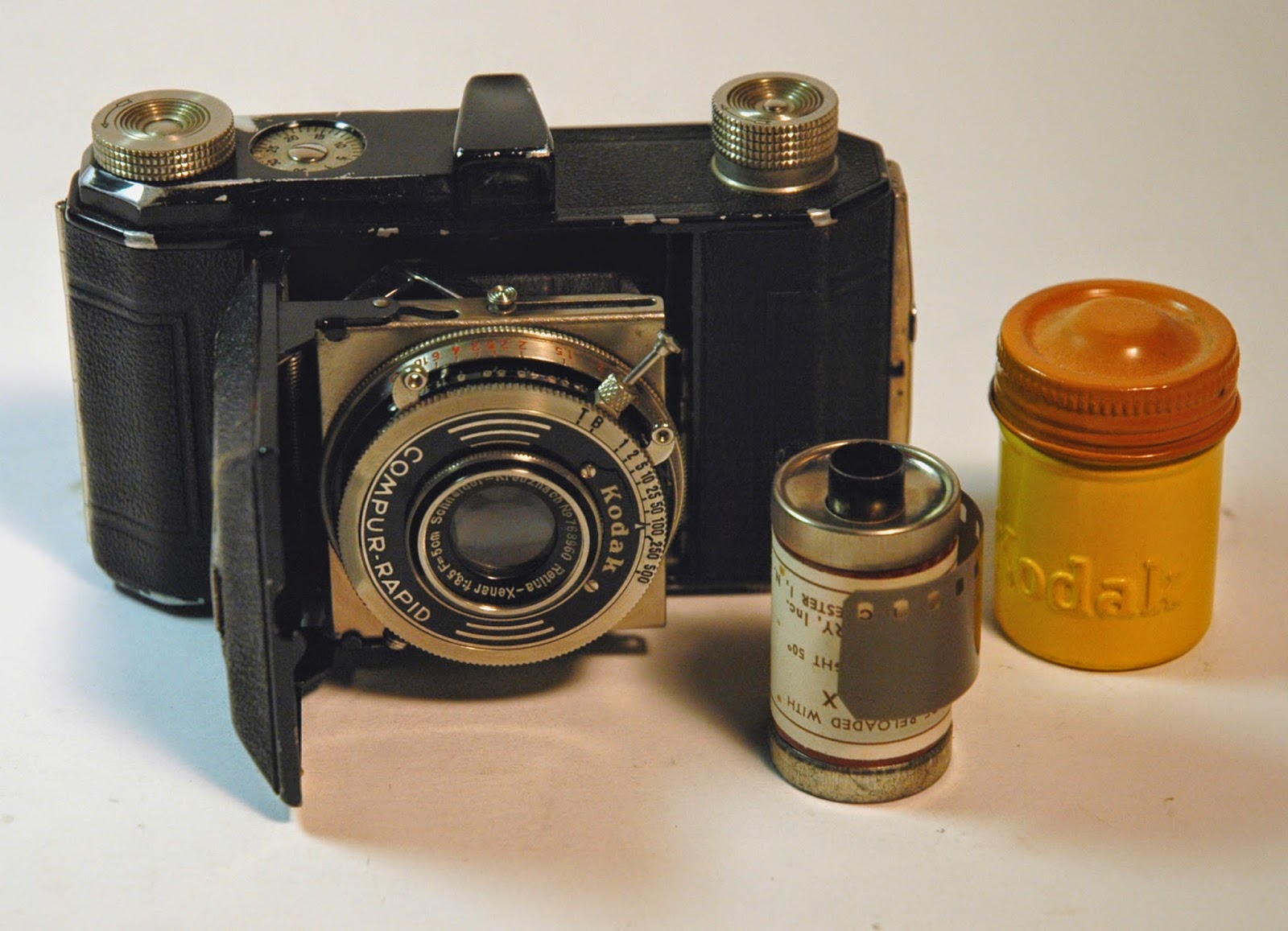Around 1977, I was looking for a truly pocketable 35mm camera that I could take with me for casual shooting—something that none of my Nikons allowed. At that time I was living in Eugene, Oregon, a university town with an active photographic community. It even had a store that specialized in selling only used cameras. It was in that store that I located this Retina I and, after promising that I would actually use it for taking pictures, the owner sold it to me for a modest sum. I have run a number of rolls through it over the years, but in the end its liabilities outweighed its virtues and currently I use other cameras for my film photography.
This is a solid, compact camera and folded, it slips readily into a jacket pocket or belt case. The Compur-rapid shutter with speeds to 1/500th of second stills works and has never given me any trouble. The unit-focusing 5cm f3.5 Xenar lens is decent and capable of good results within the limits of an uncoated lens. On the other hand, the finder is squinty. The controls are tiny and setting the aperture is difficult. The depth-of-field scale is on the bottom of the camera
and impossible to access if the camera is in its case. But the biggest
problem is the lack of double-exposure prevention. If one always
remembers to advance the film immediately after taking a picture, then
maybe that problem goes away, but I used this camera so seldom that good
habits never formed.
The Retina series of 35mm cameras were the brainchild of Dr. August Nagel, former head of the Contessa-Nettal AG company in Stuttgart who walked away from the merger of his company with Zeiss Ikon to continue his own company. Deciding that 35mm film cameras were more than a passing fancy, Eastman Kodak bought Nagel Camerawerk, and began manufacturing the Retina I in 1934. This type 119 (1936-1939) is similar to the earlier two models but the lines are cleaner and the frame counter sets into the camera top. The black painted finish, nickel trim and fine-grain leather covering have held up well.
Note the still-unexposed roll of Eastman film in the picture. It is a 20-exposure roll of Eastman Plus-X (exposure index: 50), nitrate base, and a contemporary of this camera. Do not get a flame near it! Nitrate film is highly flammable. This picture also appears as an illustration in my book on the early history of the Nikon camera.
Subscribe to:
Post Comments (Atom)

No comments:
Post a Comment